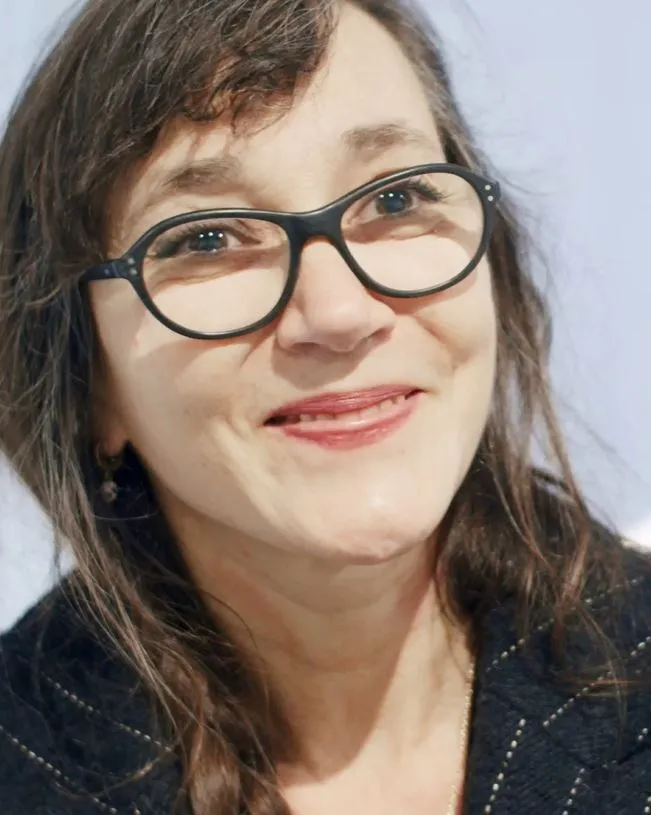
Tatiana Trouvé / Interview
“The sculptures were created with the intention that these are guardians or some kind of prophet.” Tatiana Trouvé on "The Guardians".
Who or what are The Guardians?
They are sculptures that look like chairs with an ensemble of elements placed on top of them. These elements are made from different materials. The sculptures were created with the intention that these are guardians or some kind of prophet. . (…) They are sculptures, made to be in the company of other works, and to watch over these artworks and/or ideas (…)
An open book in onyx rests on the back of one chair, and on the seat of another. Are the titles and authors of these books significant? What is your relationship to these texts and to literature in general?
“Each guardian embodies an imaginary character.”
The elements are truly suggestive, they evoke a person. With some of the guardians, we have real books and actual authors, and these offer a kind of reading of the world that is at once poetic, political and literary.
One of the guardians has an open book in onyx without a title, but the book underneath it is a book by Nastassja Martin, a French anthropologist who recounts an incident with a bear that left her without part of her jaw. However, this account is rather beautiful in that instead of placing herself as the victim, she explains how ultimately, she took something from the bear, and the bear, of course, took something from her. On the book made from onyx, we can see a small head that is also missing a part of the jaw. All of the books enter into a kind of dialogue. On the other guardians, there are books by Ursula Le Quin, a science-fiction author, sometimes qualified as an eco-feminist as her books often focus on Amerindian territories that have been stolen, and the place of women, etc. There’s also a book by Italo Calvino entitled Invisible Cities, a story of imaginary cities where all the cities have the name of a woman and there’s also an exploration of the concept of territory. All of these books refer to each other and allow us to navigate through different worlds. The guardians have books that help with this navigation, we can imagine that these chairs were occupied by people who could inhabit such places and watch over these worlds. Elsewhere, we can see objects from everyday life, arranged in a certain way on the chairs.
One of these abandoned books is by Fernando Pessoa. To quote the poet: “do your guardians dream other people’s dreams”?
I owe a lot to Pessoa, be it the titles of some of my drawings, like the Intranquility series, which was really inspired by Pessoa's Book of Disquiet. (...) There’s possibly a connection here with the guardians, because each guardian embodies a kind of imaginary, absent figure who is supposed to occupy that chair, but instead, we only see objects belonging to them. There is an echo too with Fernando Pessoa’s heteronyms.
“Yes, obviously the guardians dream other people’s dreams. Of course.”
Why make comfortable chairs that appear to be still warm with the imprint of their occupants, from cold, rigid materials like granite, marble or bronze?
I wouldn’t qualify the materials I use as being rigid. They are very much alive. The stone is formed very, very slowly. Geologically, it is not a material that is rigid and cold, but surprisingly, one with a long life. My palette consists of materials like metal, bronze, wood, stone, etc. But what I enjoy most is getting them to correspond and making them fit into each other, moving from one subject to another, all coexisting at the same time.
Why and how did you decide to place these works in an exhibition gallery?
These guardians are obviously the custodians or guardians of artworks, spaces and worlds. I think that every exhibition, whether thematic or individual, offers a vision of the world. Therefore, these pieces are kind of like well-meaning works that look out for others. They are not the guardians of empty spaces. They are pieces that exist in relation to other works. There are connections between the world suggested by each guardian and the world they are supposed to preserve.
If you could be the custodian or guardian of any artwork, either in an ancient or contemporary museum, which one would you choose?
If we take it that museums are places that preserve culture or knowledge, I think I would opt for a museum different to the one constructed by Western civilizations. I would like to be the custodian of something bigger, more natural and alive. I could see myself being a guardian of the great mountain apes, or in the Serengeti. Or somewhere in the Amazon. That kind of guardian.
“I could see myself being a guardian of the great mountain apes, or in the Serengeti.”